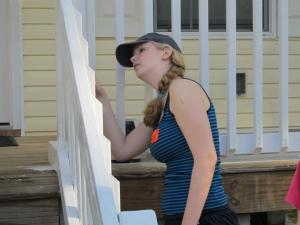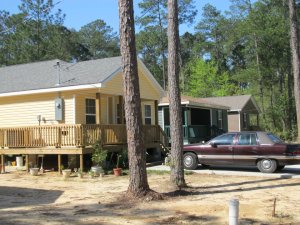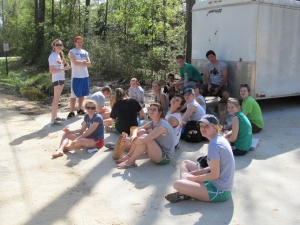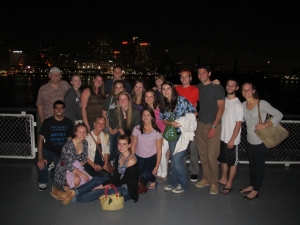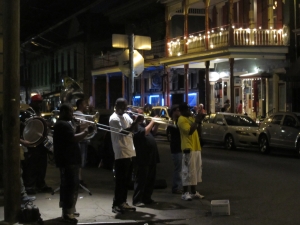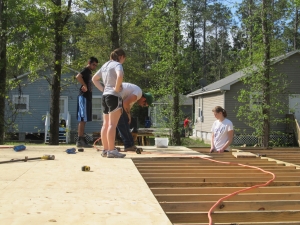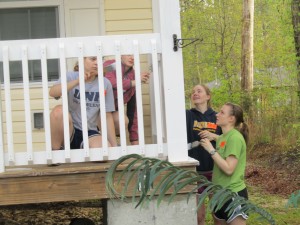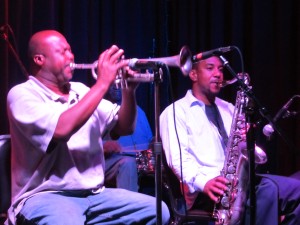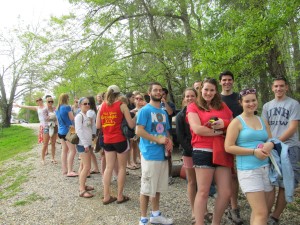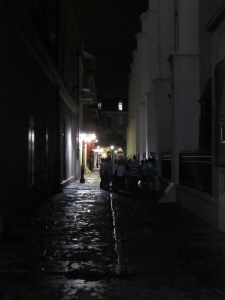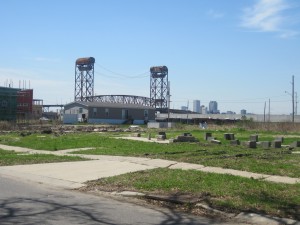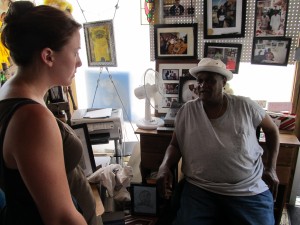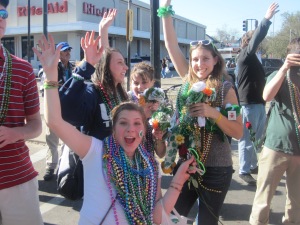Today we returned to Maple Street to work on the houses some more. We’ve got more painters than we have things to paint, so we have down time. A few of us used this time to explore the area. We walked around the neighborhood and realized just how many Habitat houses there are; aside from some stone houses that must have made it through Katrina, nearly every house in the neighborhood was built by Habitat. It’s sad, but also wonderful that such a progressive non-profit exists, and that people are continuing to persevere, even after losing so much.
On our walk, we saw so many flowers and realized how much we missed them! Everything is already lush and green here, so returning to NH is not going to be easy. We also saw a few abandoned houses, all boarded up. Apparently, abandoned houses cannot be worked on or sold or anything; the local government has to wait until the house falls down to take any legal action. Many people didn’t come back after the hurricane, and looks as though the government will be waiting for a while. In the meantime, the houses stand there as a stark reminder of Katrina.
We also walked through Slidell’s “projects.” They certainly did not look like low-income housing and did not feel dangerous; but we were told not to go there again, as there is a lot of violence that takes place over there. The people we passed were very friendly and tipped their hats to us, so this seemed not to fit together very well. Guess we still have a lot to learn about the area!
I also had to take care of Root Beer today (the name of the neighborhood pit bull has now been confirmed), because his leash allowed him to climb up the stairs that we were painting. After he succeeded once in getting dirty paw prints all over the stairs, and blue paint all over his paws, I took him for a little walk around the neighborhood to let the group paint in peace. He had a ball; it was like watching a young child on Christmas morning! He rolled in the leaves for five minutes, tongue out and tail wagging, and then went mud puddle jumping (dragging me through the mud with him and also tipping over a bench in the process). He was filthy after this field trip, and I tried to give him a bath but, as it turns out, he hates water and ran away immediately. He then rolled around in the sand under the porch, all while watching me as if to say “Ha! I win!” It was pretty funny!
After showering and eating another hearty dinner (meatloaf and potatoes and green beans), we headed to Xavier University in New Orleans to see Dr. Michael White and his quartet perform. Dr. White is a jazz clarinetist, and also a professor at Xavier. His quartet consists of a trumpet player, a bassist, and a banjo player. The four musicians were absolutely phenomenal! They truly delivered everything anyone could want from a jazz concert. Dr. White took us through the history of jazz and the musical techniques used through lecture and demonstration. The four played songs from each period of history to illustrate the changes, and also played different types of jazz, including the blues, ballads, jazz funeral dirges, Spanish-influenced jazz, etc. They also performed the “Basin Street Blues” (one of the tunes from our midterm) and the trumpet player sang. That was probably my favorite part! Watching their fingers fly over the keys/strings and also taking in the intense, passionate body language/facial expressions was awe-inspiring! It also made me miss my clarinet, though I will never be as good as Dr.White! The musicans were just talented, genuine people, and I am so glad that I got to experience traditional New Orleans jazz!
After the concert, we thanked the musicians, and most of us headed back to Slidell to catch up on some much-needed sleep!
— Lily O’Gara —
